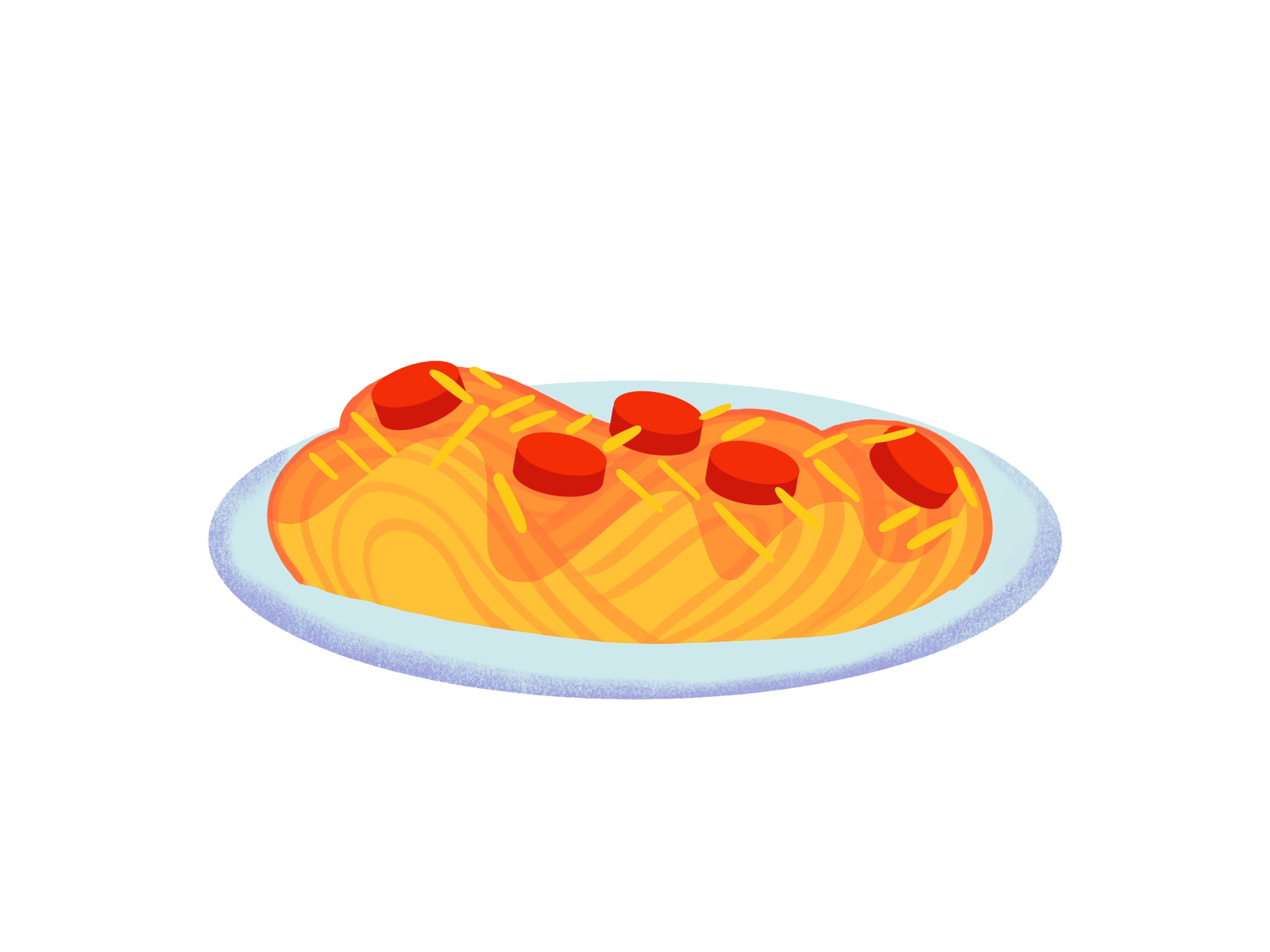We asked students to tell us about the food that takes them home — in 250 words or less.

Illustration by Masha Dolgoff
Braden Pomerantz
From my grandma’s chicken enchiladas to my dad’s pulled pork, many dishes from home can never be replicated. There is, however, an easy, two-ingredient snack I hold dear to my heart: popcorn and Hot Tamales candies. Simple and strange, it’s a recipe my grandparents passed on to my sister and me when we were young. Whenever I eat that perfect pairing, I’m suddenly a 10-year-old sitting in my hometown movie theater as my grandma holds the way-too-large tub of popcorn — which we, of course, refill for free after the movie — and pulls out the box of hot tamales she snuck in her purse. I’m reminded of my relationship with my sister and how we always stop at the dollar store for hot tamales before watching a movie. I don’t remember all the movies, but I remember the butter, the cinnamon and the feeling of being surrounded by people I love.
Isaac Sageman
As a college student, home can sometimes feel far away, especially when you have your own lease and never visit. I reconnect through the recipes my mother made for me before I left. She drafted, printed and bound a cookbook for me titled “Cooking From Home” so I would never forget the sweet and savory tastes of the house I grew up in. Every week, I make something from that book, whether it’s lemon-rich chicken, tomato-basil pasta, a traditional Hungarian dish or a random concoction I find in the pages. However, nothing takes me back to my childhood like Annie’s mac and cheese with peas mixed in. For as long as I can remember that has been my go-to snack food. It tastes like summer days of running the streets with my friends, of cold winter mornings when school was cancelled. It tastes like the care of a mother who knew just what her son wanted and the safety of a place that will always be there for me.
Karli Goldenberg
Home tastes like matzo ball soup, made by a mother named Mary. It tastes like Bubbie and Zadie coming to Easter dinner even though they don’t celebrate. It tastes like the borscht I never had because we traded it away to seem more American.
It tastes like Christmas ham, hours of work in the kitchen, and the way it’s always framed by at least one unnecessary apology that the whole family will reject. It tastes like the recipes that Grandma in New York wrote by hand and passed down to my mom.
It smells like the almond extract in Mom’s tri-color cake and the spaghetti and meatballs that Grandma in New York always had ready on the stove whenever we’d visit. It tastes like the pistachios at the center of the gingham cloth on her kitchen table, a staple at any get-together.
It tastes like no one asking me or my family, “So, what are you?” It tastes like coexistence.
Olivia Viscuso
On a normal Tuesday night, chopping garlic is like therapy. It’s an excuse to take my mind off of a mile-long to-do list and let my muscle memory lead the way. There’s something about the way garlic smells when I drop it in a pot of piping hot olive oil that reminds me of Tuesday nights at home.
My mom always kept tomatoes in the house. We had a bowl of the little cherry ones out on the counter all the time, and my friends and I would pop them in our mouths like candy as we passed by. Between work and shuttling kids to and from various activities, sometimes all my mom had the energy to make at the end of the day was tomato sauce.
There’s something so perfect about such a simple thing. She’d cook the garlic and empty that bowl of tomatoes into the pot, and the smell was intoxicating. Tasting her sauce was like the feeling of summer.
Now, being so far away, I don’t get to come back to that amazing smell on a Tuesday night. I miss my mom, but I still have the love of food and cooking she instilled in me. I usually keep some garlic and cherry tomatoes on hand, though — just in case I need a taste of home.
Jeanne Paulino
Most people think the Italians invented spaghetti, but I am convinced the Filipinos did.
Growing up, the spaghetti I knew was sweet. The sauce was not made out of tomatoes but out of banana ketchup, a sugar- and vinegar-infused, dyed red paste made of, yes, bananas. It was topped with artificially red hot dogs and creamy shredded cheese.
For the first eleven years of my life, this was all I knew. Family members swapped tips: infuse cheese in the sauce, add mushrooms, serve with a side of pan de sal, a sweet bread. (What can I say? We Filipinos like our sweets.) My Filipino friends shared their love for this traditional dish. Even Jollibee, the Filipino equivalent of McDonald’s, featured the sweet spaghetti.
It was only when I attended middle school and interacted more extensively with white students that I realized Italian-style spaghetti was considered the norm.
Years have passed. I’ve interacted with and befriended more white students. I’ve become aware of the unique aspects of Filipino culture and appreciated both my identity as Asian and American. I’ve consumed both types of spaghetti, sweet and savory, and developed a taste for each. But, no matter how much time has passed or how much pasta I consume, home will always be noodles slathered in banana ketchup.